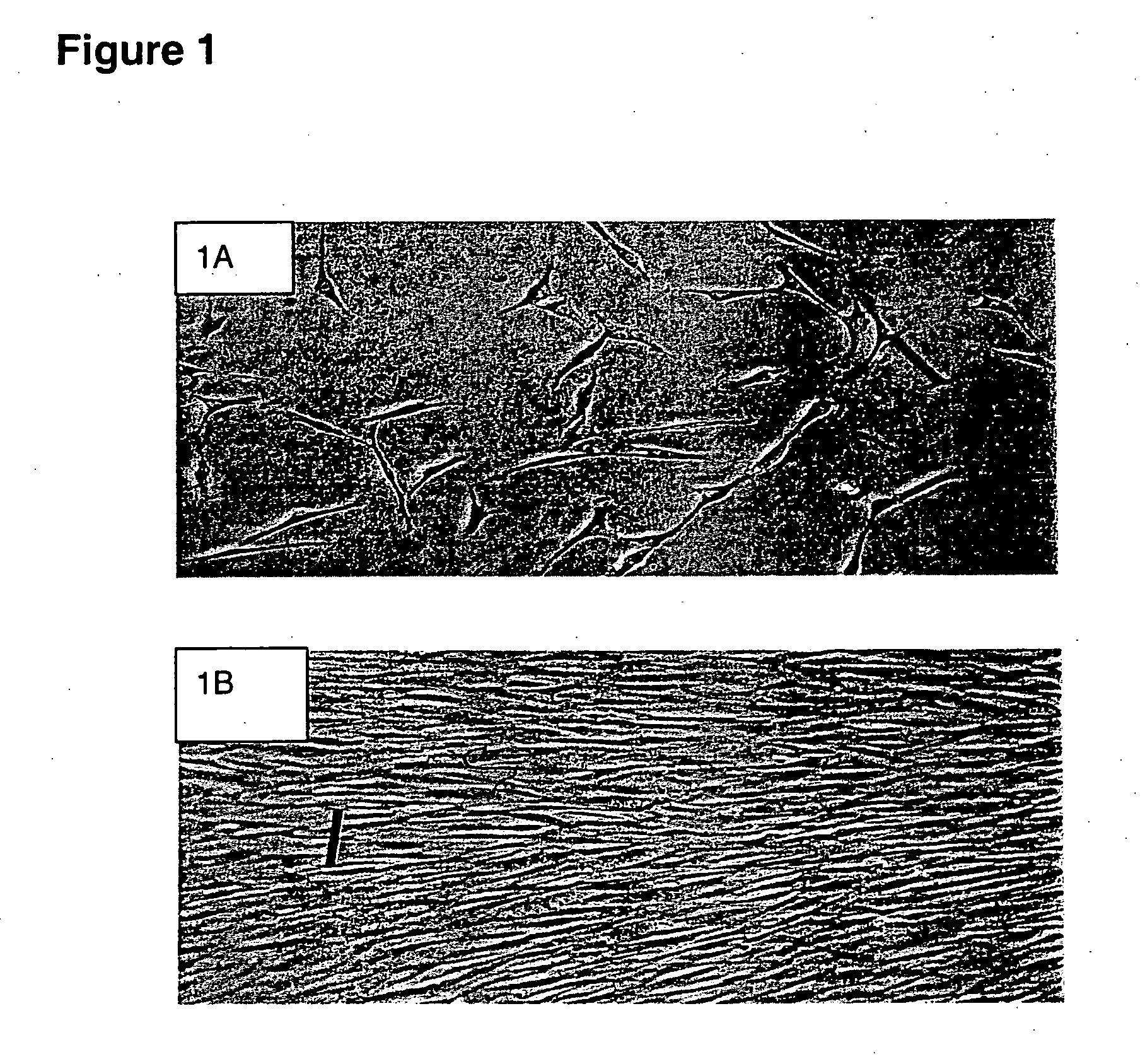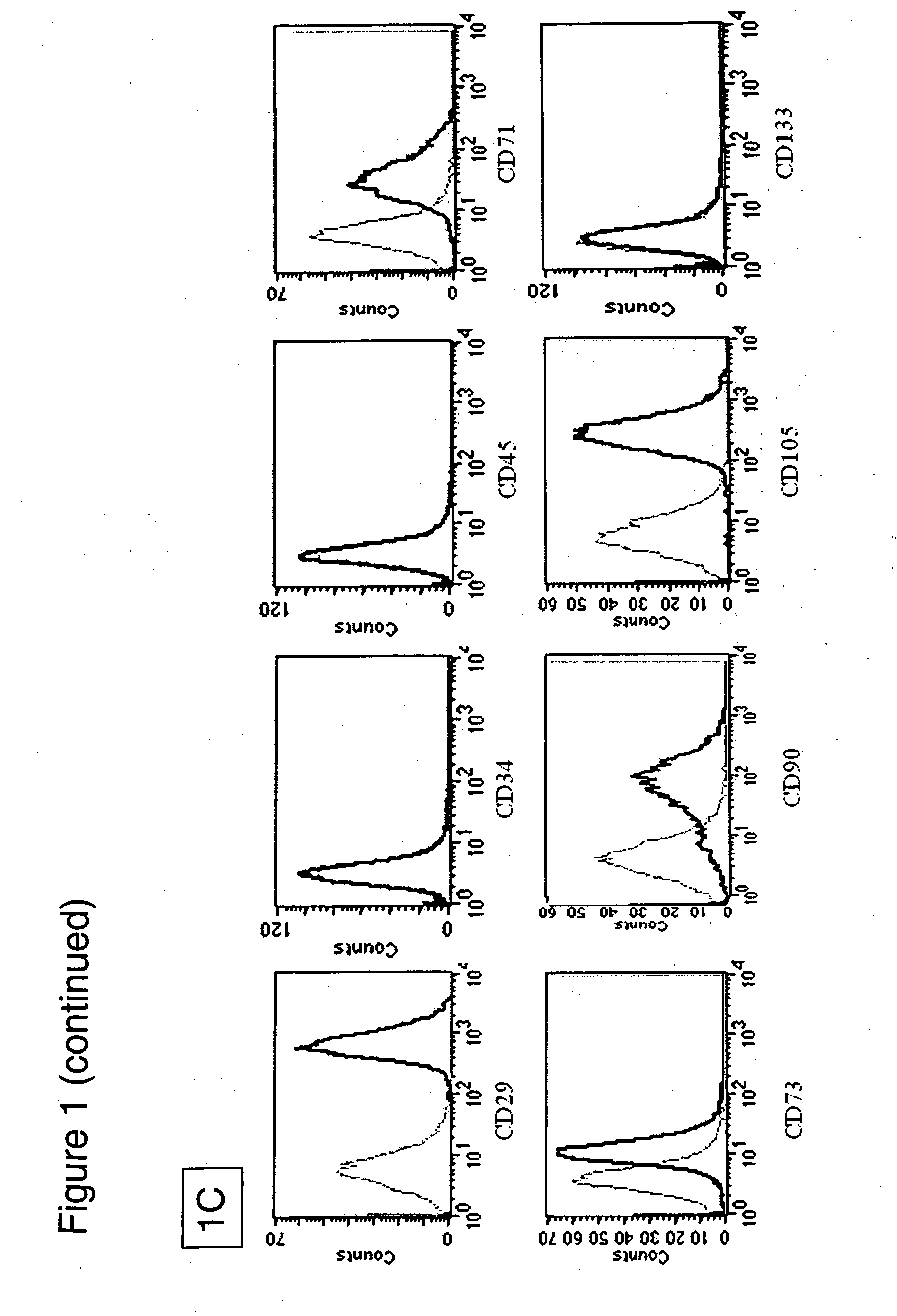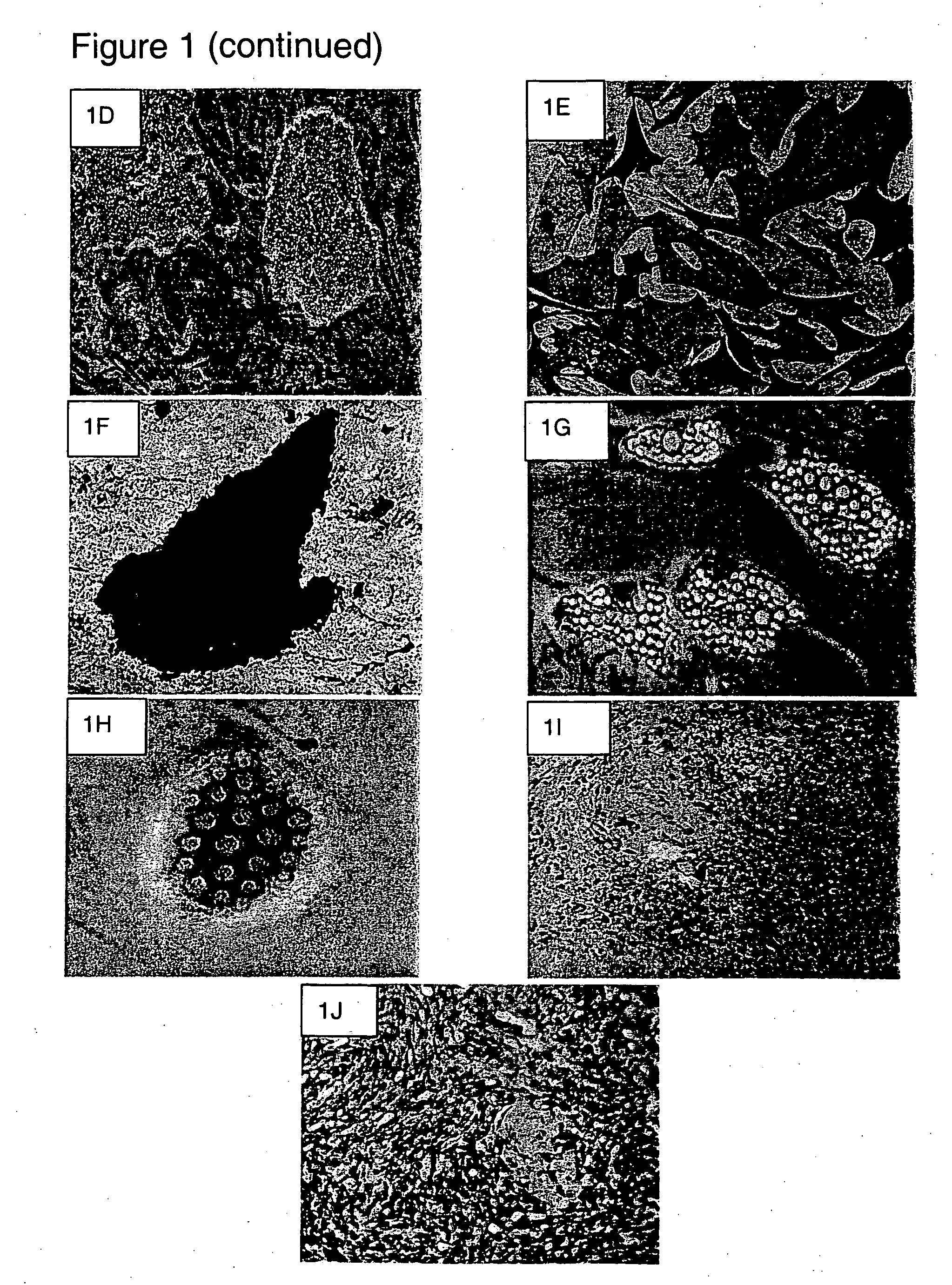Simple and rapid derivation of functional hepatocytes from human bone marrow-derived mesenchymal stem cells
a technology of mesenchymal stem cells and functional hepatocytes, which is applied in the field of simple and rapid derivation of functional hepatocytes from human bone marrow-derived mesenchymal stem cells, can solve the problems of low residual function, difficult use of primary cultures of hepatocytes, and loss of most liver functions
- Summary
- Abstract
- Description
- Claims
- Application Information
AI Technical Summary
Benefits of technology
Problems solved by technology
Method used
Image
Examples
example 1
MSC Isolation and Culture
[0078] Cytokines: Basic-fibroblast growth factor (bFGF), hepatocyte growth factor (HGF), and oncostatin M (OSM) were purchased from R&D Systems (Minneapolis, Minn.).
[0079] Isolation: Human bone marrow was aspirated from the iliac crest with informed consent. Mononuclear cells were obtained by negative immunodepletion of CD3, CD14, CD19, CD38, CD66b, and glycophorin-A positive cells using a commercially available kit (RosetteSep®, StemCell Technologies, Vancouver, BC, Canada), followed by Ficoll-Paque® (Amersham-Pharmacia, Piscataway, N.J., USA) density gradient centrifugation (1.077 g / cm3). The MSCs were then plated in non-coated tissue culture flasks (Becton Dickinson) in expansion medium (Iscove's modified Dulbecco's medium (IMDM, Gibco BRL, Grand Island, N.Y.) and 10% Fetal Bovine Serum (FBS, Hyclone, Logan, Utah) supplemented with 10 ng / ml bFGF, 100 U penicillin, 1000 U streptomycin, and 2 mM L-glutamine (Gibco BRL)). Cells were allowed to adhere overn...
example 2
In Vitro Differentiation
[0082] Osteogenic differentiation: To induce osteogenic differentiation, fifth- to seventh-passage cells were treated with osteogenic medium (IMDM supplemented with 0.1 μM dexamethasone (Sigma), 10 mM β-glycerol phosphate (Sigma), and 0.2 mM ascorbic acid (AsA, Sigma)) for three weeks with medium changes twice weekly. Osteogenesis was assessed at weekly intervals. The resulting osteocyte-like cells (FIG. 1D) showed positive alkaline phosphatase (FIG. 1E) and von kossa stainings (FIG. 1F).
[0083] Chondrogenic differentiation: To induce chondrogenic differentiation, fifth- to seventh-passage cells were transferred into 15 ml polypropylene: tubes and centrifuged at 1000 rpm for 5 minutes to form a pelleted micromass at the bottom of the tube. The cells were then treated with chondrogenic medium (high-glucose Dulbecco's-modified Eagle's medium (DMEM) (Bio-fluid, Rockville, Md., USA) supplemented with 0.1 μM dexamethasone, 50 μg / ml AsA, 100 μg / ml sodium pyruvate ...
example 3
In Vitro Hepatogenic Differentiation
[0085] To induce hepatogenic differentiation, fifth- to seventh-passage cells, at approximately 60% confluence, were serum-deprived for 2 days to synchronize cells in IMDM supplemented with 20 ng / ml EGF and 10 ng / ml FGF-2, followed by hepatic induction with differentiation medium containing IMDM supplemented with 20 ng / ml HGF, 10 ng / ml FGF-2, and 0.61 g / L nicotinamide for 7 days. The differentiation medium was then removed and replaced with hepatic maturation medium containing IMDM supplemented with 20 ng / ml OSM, 1 μM dexamethasone, and 1% (v / v) 50 mg / ml ITS+ premix. Medium changes were carried out twice weekly and hepatogenesis was assessed by RT-PCR at the time points indicated.
[0086] In the presence of HGF and FGF, the fibroblastic morphology (FIG. 2A) of the marrow-derived MSCs was lost and the cells developed a broadened, irregular morphology 1 week post induction (FIG. 2B). In the presence of OSM and ITS+, a retraction of elongated ends wa...
PUM
| Property | Measurement | Unit |
|---|---|---|
| time | aaaaa | aaaaa |
| time | aaaaa | aaaaa |
| concentration | aaaaa | aaaaa |
Abstract
Description
Claims
Application Information
 Login to View More
Login to View More - R&D
- Intellectual Property
- Life Sciences
- Materials
- Tech Scout
- Unparalleled Data Quality
- Higher Quality Content
- 60% Fewer Hallucinations
Browse by: Latest US Patents, China's latest patents, Technical Efficacy Thesaurus, Application Domain, Technology Topic, Popular Technical Reports.
© 2025 PatSnap. All rights reserved.Legal|Privacy policy|Modern Slavery Act Transparency Statement|Sitemap|About US| Contact US: help@patsnap.com



